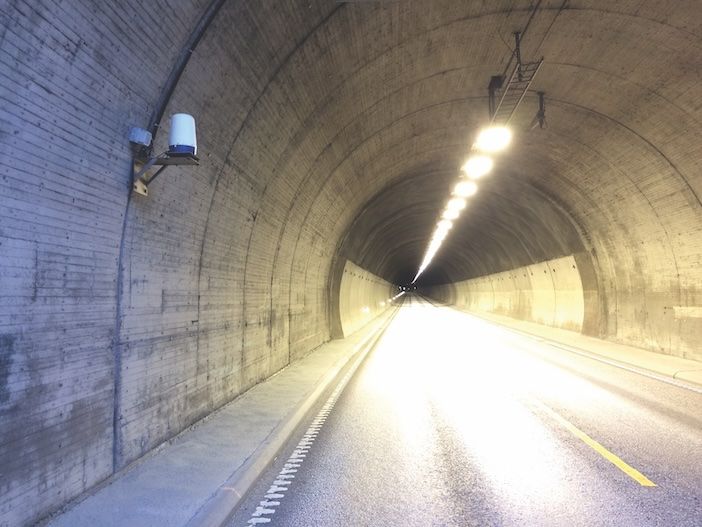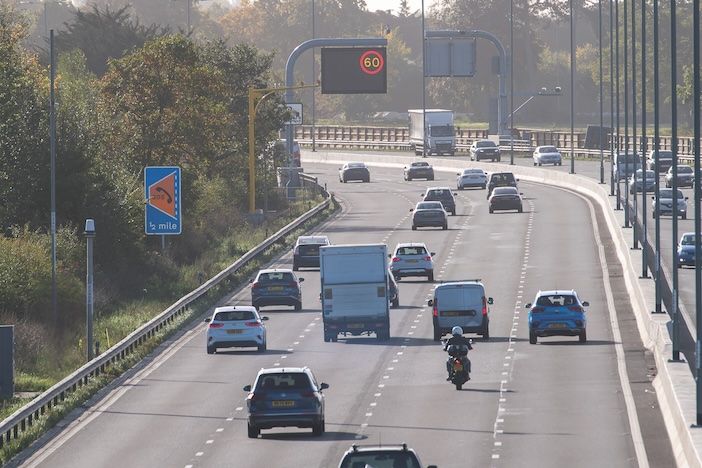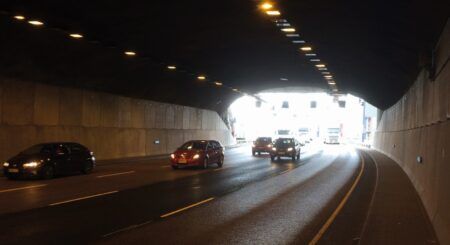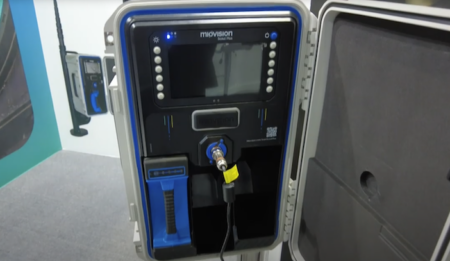How 360-degree radar from Navtech delivers robust and reliable real-time traffic monitoring in poor visibility, helping operators improve safety, efficiency and network resilience
Intelligent transport systems rely on a range of technologies to monitor and manage road networks and tunnels efficiently. While video cameras, inductive loops, and lidar are widely recognized, 360-degree radar remains a lesser known but highly effective solution. Its ability to detect objects over long distances and in poor visibility makes it a powerful tool for automatic incident detection and traffic management.
How radar detection works
Radar operates as an active sensor, transmitting radio waves that reflect off objects and return to the radar’s receiver. This radar data can be processed using advanced software to gather information about an object’s size, location, and direction of movement. Unlike optical-based sensors, radar can operate unhindered by adverse weather conditions, such as fog, rain, snow, or complete darkness, ensuring reliable performance in all environments. It also works in challenging tunnel lighting conditions, including at portals where lighting can change dramatically and accidents are more likely to happen.
360-degree radar technology offers a cost-effective alternative to traditional roadside monitoring
360-degree scanning radar
Widely used in marine and air traffic control applications due to its long-range coverage and resilience, 360-degree scanning radar is now being adopted for highway and tunnel management. Navtech’s 360-degree radar, designed specifically for traffic applications, rotates at 4Hz, producing a full 360-degree scan of the surrounding environment four times per second.
By continuously comparing successive scans, advanced analytics track both stationary and moving objects in real time. Rules-based software generates incident alerts and helps reduce false alarms. When integrated with wider traffic management systems, 360-degree radar-based detection enables automated incident alerts
24/7, improving response times and efficiency.

The benefits of 360-degree radar
Faster incident detection and response 360-degree radar AID can detect slow, queuing and stopped vehicles, wrong-way drivers, pedestrians, wildlife and debris in seconds. Navtech’s radar-software solution can integrate with traffic and video management systems, and automatically direct PTZ cameras to the incident location providing operators with immediate visual context. This automation enhances situational awareness, enabling faster and more informed decision-making.
Data-driven traffic insights Beyond incident detection, high resolution 360-degree radar with advanced software can support traffic analysis by providing vehicle classification, count data, and journey time analytics, all from a single system. These insights help road operators optimize network performance and plan for future demands.
Safer part-time shoulder use With growing congestion and limitations on road expansion, many transport authorities are turning to part-time shoulder use and all-lane running schemes to maximize capacity. 360-degree radar enhances the safety of these strategies by offering reliable vehicle detection and monitoring capabilities across long stretches of roadway, in variable conditions.
10+
The years Navtech’s 360-degree radar units can operate before servicing or roadside maintenance is required
Maintaining traffic flow For road operators focused on reducing congestion, early incident detection and ramp monitoring are critical. By identifying disruptions fast, 360-degree long-range radar can help maintain steady traffic flow, minimizing delays and improving network efficiency.
Improving tunnel safety With the ability to detect incidents at portals where accidents are most likely to happen, 360-degree radar is improving safety in tunnels. It is also unaffected by all tunnel lighting conditions such as headlight glare, and continues to work through fire, smoke and hot gases in the event of a tunnel fire.
Cost-effective deployment 360-degree radar technology offers a cost-effective alternative to traditional roadside monitoring systems. It can often be mounted on existing infrastructure, such as gantries, reducing installation costs. With a typical spacing of 500m between Navtech’s radar units on a highway, and up to 300m in a tunnel, the system can provide multiple functions reducing the need for additional roadside technology. In addition, the system requires no servicing or roadside maintenance for 10+years.
This article first appeared in the March 2025 edition of TTi magazine





